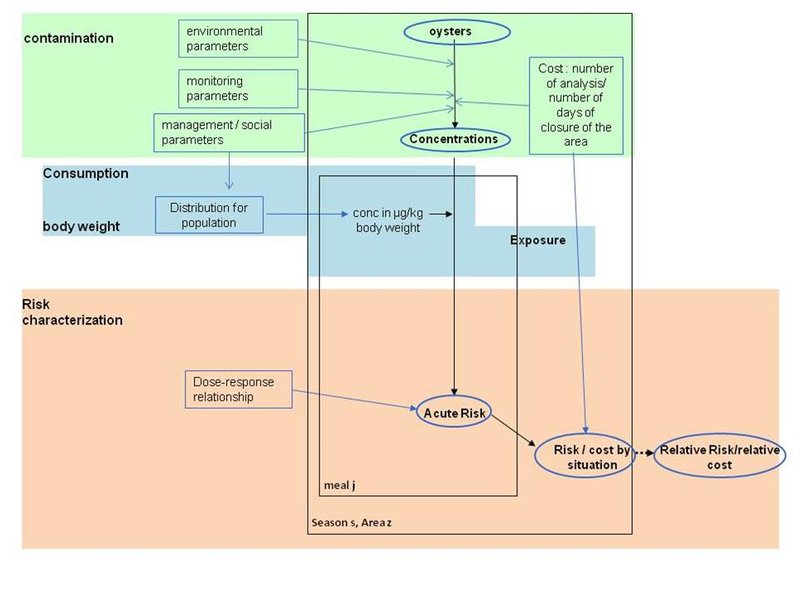ANSES DER (French Agency for food, environmental and occupational health and safety, Risk Assessment Department )
At ANSES, two sections of the Risk Assessment Department, located in Maisons-Alfort (near Paris), are involved in studies dealing with phycotoxins.
The division on Methodology and Observatory, and more precisely the Unit on Methodology and Studies in Microbiology and Animal Health, in charge of biomathematical support to health risk assessment.
The division on Food Risk Assessment, in charge of performing human health risk assessment based on a critical review of toxicity studies and contamination data in food. The division relies on expert committees made up of external national and international scientists.
Themes of research: Hazard characterization (i.e. toxicity of phycotoxines, their adverse effects, mode of action), Dose-response relationship, Collection of data on shellfish contamination, Quantitative risk assessment of toxins produced by biological agents, Probabilistic and dynamic modeling, Risk assessment associated with the consumption of contaminated shellfish.
Expertise:
- Probabilistic modeling of contaminated shellfish and health risk assessment, applications to shellfish monitoring: PSP in scallops, DSP in shellfish, Vibrio parahaemolyticus in oysters and mussels, Hepatitis A and Norovirus in oysters.
- Critical review of toxicity studies (in vitro, in vivo in animals, human data), contamination data analysis, dietary exposure assessment, scientific advice to risk managers for optional measures and for national and European regulation.
Implication in Accutox:
The team has a significant experience in biostatistical and methodological assistance in statistics (Garcia et al, 2011*); quantitative risk assessment using probabilistic/bayesian modelling (David et al., 2012*) and sampling techniques in the field of microbiological (including parasites and viruses) and chemical contaminants. The team works in cooperation with the scientific panels of expertise in microbiology and animal health from the French Food Safety Agency (laboratories and health authorities) to assess microbiological risks. The team also participates in research programs in the field of risk analysis and food safety.
The main skills of this team are biostatistical and methodological support in statistics as well as sampling techniques. These sampling techniques are particularly developed for Ministry of Agriculture (Guillier et al ,2011*), especially for phycotoxins or cyanobacteria monitoring strategies in oysters. They are also developed for assessment of population exposure to microbiological hazards (hepatitis A and E virus, Norovirus, Toxoplasma, Cryptosporidium; Thébault et al., 2012*) and for assessing the determinants of these exposures, managing and exploiting databases on food contamination and implementing risk modelling and research associated with these activities.
The team (Anne Thébault and Nathalie Arnich) is Task 6 leader in the ACCUTOX ANR project. The objective of this task is to perform quantitative health risk assessments associated with the consumption of oysters contaminated with PSP toxins, considering different scenarios, by probabilistic modeling, separating variability and uncertainty. It is planned to further investigate the dose-response relationship, based on a methodology usually used for microbiological acute risk. The team will also investigate the impact of different monitoring/management strategies on human health risk and on the number of days during which shellfish areas are closed. The figure below describes the methodology that will be applied in this task.
Figure 1: Quantitative risk assessment methodology in ACCUTOX project.


